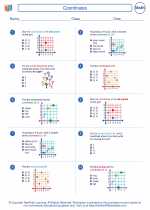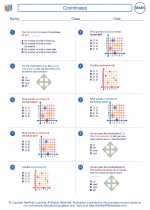Cylinder
A cylinder is a three-dimensional shape that has two parallel circular bases and a curved surface connecting the two bases.
Parts of a Cylinder
A cylinder has the following parts:
- Base: The two circular ends of the cylinder
- Height: The distance between the two bases
- Radius: The distance from the center of the base to the edge
- Diameter: The distance across the center of the base
- Surface Area: The total area of the curved surface and the two bases
- Volume: The amount of space inside the cylinder
Formulas for Calculating Cylinder Properties
To calculate the surface area and volume of a cylinder, you can use the following formulas:
Surface Area (A): 2πr1 + 2πr2 + 2πr1h
Volume (V): πr2h
Where:
- r1 and r2 are the radii of the two bases
- h is the height of the cylinder
Study Guide
Here are some key points to remember about cylinders:
- A cylinder has two circular bases and a curved surface.
- The height of a cylinder is the distance between the two bases.
- The radius is the distance from the center of the base to the edge, while the diameter is the distance across the center of the base.
- The surface area of a cylinder is the total area of the curved surface and the two bases.
- The volume of a cylinder is the amount of space inside the cylinder.
- Use the formulas for surface area and volume to calculate the properties of a cylinder.
Now that you have a good understanding of cylinders, you can practice solving problems and applying these concepts to real-world situations.
.◂Math Worksheets and Study Guides Fourth Grade. Coordinates
Study Guide Coordinates
Coordinates  Worksheet/Answer key
Worksheet/Answer key Coordinates
Coordinates  Worksheet/Answer key
Worksheet/Answer key Coordinates
Coordinates  Worksheet/Answer key
Worksheet/Answer key Coordinates
Coordinates 

 Worksheet/Answer key
Worksheet/Answer key
 Worksheet/Answer key
Worksheet/Answer key
 Worksheet/Answer key
Worksheet/Answer key

The resources above cover the following skills:
Geometry (NCTM)
Specify locations and describe spatial relationships using coordinate geometry and other representational systems.
Describe location and movement using common language and geometric vocabulary.
Make and use coordinate systems to specify locations and to describe paths.